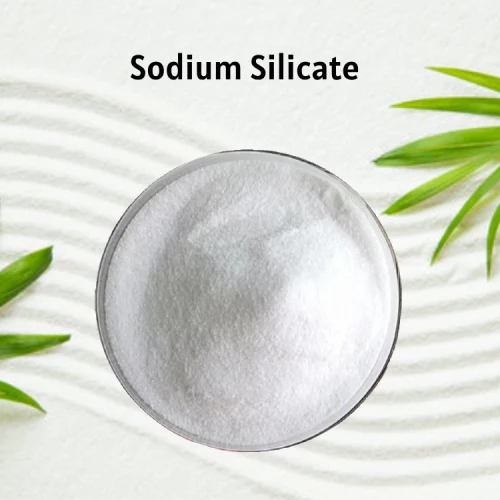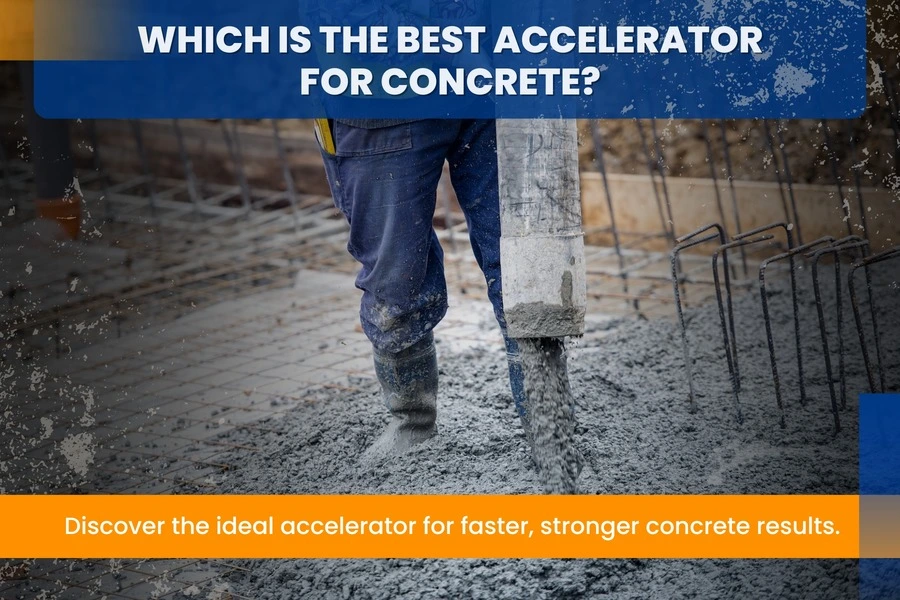Introduction to Accelerators in Concrete
Concrete is the most common construction material, but they all have but one drawback: setting time. In many cases, construction requires concrete to set faster due to weather conditions, deadlines, or structural needs.
This is where concrete accelerators come into play. As additives, they accelerate the hydration process of cement, reducing the time for concrete to set and develop strength.
But choosing the correct accelerator can be quite difficult because there is such a great selection out there. The guide talks about the best concrete accelerators, their advantages, and suggestions on using them.
Table of Contents
Types of Accelerators
Concrete accelerators repeated in various types, depending on their influence upon the properties of concrete they are suited to enhance. According to this lines, three major types are formed:
1. Chloride-Based Accelerators
Usually containing calcium chloride (CaCl₂), this concrete admixture is characterized by faster setting and early strength development. While inexpensive, it increases corrosion in the presence of steel reinforcement, rendering it unsuitable for the use of reinforced concrete applications.
2. Non-Chloride Accelerators
These materials are free from chlorides-which prevent the onset of corrosion of steel; they are used in reinforced concrete structures where the integrity of the steel is vital. Slower in setting than the previous category, this shall be more on the safe side for using in the journey of construction, providing far better durability of the work done.
3. Alkali-Based Accelerators
Strength of concrete in the early stages can be developed by various alkali-based compounds. These may set and gain strength far faster than others; however, they produce more shrinkage ultimately. Hence, this type is normally reserved for special applications where its benefits can be maximized.
4. Silicate-Based Accelerators
At high temperatures, sodium silicate can be applied as a coating to seal roofs and other structures against water infiltration.
The coating also provides some degree of permeability modification of structural materials unaware of extra care should be taken while choosing the cement-rased solution. Sodium silicate thermal water sealer is ideal for improving the entire water resistance of structures.
Ask for a sample to experience top-tier quality with no strings attached!


5. Organic Accelerators
The materials are differentiated as either natural or synthetic. The following advantages are pledged to these materials as follows: In that there would be the durability of structures built of these organic materials, use of eco-friendly construction materials takes precedence for all projects with a plan of a latent benefit to the environment.
From the coupling of such organic products, even midway of concrete should accelerate the cure to a point; in respect to its optimal consistency, it is favorable for imparting to many forms of construction. These organic accelerants yield builders with minimal downtime between mixing and setting without sacrificing quality and usability.
Critical Performance Criteria for Evaluating Accelerators
Keep these performance criteria in mind when choosing the right accelerator:
1. Speeding up of Setting
The faster-rate were reached early set and ultimate set of the concrete
Very important for projects that are very tight.
2. Gain Early Strength
The amount of strength gained in concrete by 24 hours to 7 days
Essential for precast concrete and cold-weather applications.
3. Workability Effect
Some accelerators make the concrete stiffer to place and finish.
A desired accelerator does not hinder or impairs the workability of the concrete.
4. Compatibility with Other Additives
Must be compatible with water reducers, retarders, and superplasticizers.
Avoids unexpected reactions that could compromise concrete strength.
5. Effects on Durability
Some accelerators will cause shrinkage and cracking.
Long-term strength ensures non-chloride options are the better choice.
Factors to Consider When Choosing an Accelerator
To select a suitable accelerator for your specific requirements, keep the following in mind:
The project: Fast setting, early strength, or workability retention?
Weather condition: Fast-acting accelerators are needed for cold weather, while hot weather may not require them.
Type of concrete: Non-chlorides should be used for reinforced concrete in order to prevent corrosion.
Budget: Chloride-based accelerators are cheap, but may not be suitable for every application.
Environmental consequences: Some accelerators contain chemicals that could have a detrimental environmental impact. If sustainability is of utmost importance, organic or non-chloride accelerators should be selected.
Most Common Accelerators Sold on the Market
There are various types of accelerators available in the market, and they are designed to suit specific requirements for concrete applications. Some commonly used formulations are:
1. Calcium Chloride-Based Accelerators: These are probably the best-known accelerator for forcing fast-setting non-reinforced concrete. They shall be recommended where hydration of the cement needs to occur more rapidly as urgent work demands such a course.
2. Non-Chloride Accelerators: They are typically recommended for use in reinforced concrete, precast elements, cold weather construction, etc. It regulates the setting time with no additional risks of corroding the steel reinforcements due to chlorides.
3. Alkali-Free Accelerators: They are specifically designed for use in shotcreting and spraying concrete, providing improved performance without the disadvantages of alkalis; thus, imparts high durability and strength to the structures.
4. Silicate-Based Accelerators: Used mainly for waterproofing and low permeability in concrete. This provides the concrete with a very dense microstructure by minimizing water absorption and thus enhancing durability characteristics of concrete.
5. Eco-Friendly Accelerator: With the concern for sustainability in construction gaining grounds, eco-friendly accelerators are now in the spotlight. These formulations look towards reducing the carbon footprint of concrete projects, which often include natural materials or high-tech in order to hasten setting times without compromising the environment.
Using the appropriate kind of accelerator could allow construction professionals to ‘custom-tailor’ the performance of their concrete to meet specific project requirements.
Application of Concrete Accelerators
Accelerators serve a variety of purposes in different applications including:
1. Cold Weather Concreting
Facilitates rapid curing for low-temperature concrete.
Prevents voids in water-in-the-mix; don’t let the concrete freeze.
Prevent structural materials from getting damaged by extreme weather conditions just before they attain adequate strength.
2. Precast Concrete Production
This will lead to shorter times for curing to demolding, giving quick production rates.
Help gain strength after demolding.
3. Shotcrete and Tunnel Work
Becomes a requirement for fast setting and bonding.
4. Used in repair and rehabilitation work.
Unless protective measures are taken, increase in corrosion proves detrimental, especially in coastal regions where water penetration often occurs.
5. Waterproofing and Underground Constructions
Economically advantageous.
Suitable for submarine and dams.
Challenges and Limitations
Notwithstanding the advantages, accelerators offer certain drawbacks. They may lead to excessive shrinkage and crack formation. Other workability issues may arise while placing concrete due to the stiff nature imparted to it by some accelerators.
Most quality non-chloride accelerators are quite costly. Some accelerators do not work well with other admixtures, resulting in a reduction in their performance. They may also be quite sensitive to climatic conditions such as moisture and high temperature and hence need careful storage for them to last.
Best Practices for Using Accelerators
To completely maximize concrete accelerator use, some standard protocols need to be recognized.
- Quantifying Correctly: Use only the dose recommended by the manufacturer.
- Thorough Mixing: The degree of mixing in this case will ensure that even distribution takes place, thereby preventing moisture from going from the matrix to itself and allowing for any potential weaknesses and minimizing permeability.
- Test on small-scale basis before going large-scale: Conduct small batch tests before you go ahead to a full-scale application.
- Consider ambient conditions: Increase or decrease dosage levels reasonably due to the variations in temperature and moisture.
- Using good materials: Compatibility must be ensured with cement, aggregates, and another admixture.
- Ensuring good curing: Proper curing must be put in place to allow for maximum strength development of a particular type of treatment of the concrete that would include moist curing or curing accelerators.
Conclusion
Admixture choice is always project-specific. Individual circumstances may warrant one turning to a fast-setting accelerator, a hardening compound for engine strength, or an improved durability chemical-an accelerator will do it.
Non-chloride accelerators assist best in heated structures and are generally used for checked applications.
An understanding of counterpart advantages, limitations in relation to performance and right methodology will ensure concrete strength along with durability in a kind of commendable performance.
FAQs
What does a concrete accelerator do?
Accelerators speed up the cement hydration process by decreasing the setting time and enhancing early age strength gain.
What chemical is an accelerator in concrete?
Common chemicals used include: calcium chloride, sodium silicate, and some non-chloride-based compounds.
What is accelerated concrete?
Accelerated concrete contains a mixture of additives or chemicals that facilitate faster hardening and strength gainment.
How much accelerator to add to concrete?
It varies with each accelerator type, project specifications, and some recommendations. Follow the provided manufacturer’s recommendations to get proper results.
Sandip Agrawal, Polymer Engineer and MD of Sakshi Chem Sciences Pvt. Ltd., leads innovation in construction chemicals, shuttering oils, and industrial lubricants. With expertise in polymer science and eco-friendly solutions, he drives R&D and sustainable advancements, ensuring high-performance products for India and global markets.

